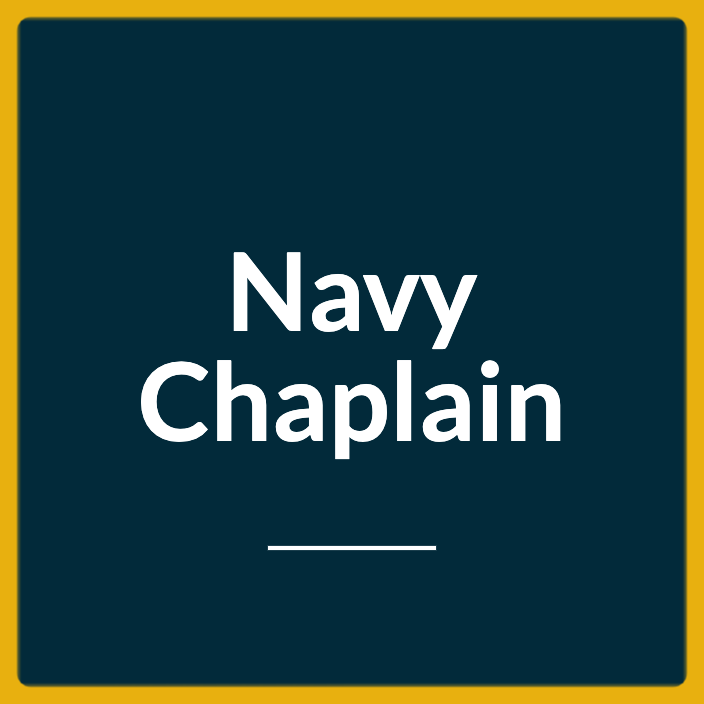Last Updated on March 4, 2024
This guide provides current information that will help you with your decision to become a Navy Civil Engineer Corps officer during Fiscal Year 2024.
The Navy consists of more than just ships, submarines, and aircraft at sea. Naval shore facilities around the world resemble small cities, complete with hospitals, airfields, power plants, housing, stores, and office buildings.
The Navy fleet support establishment is made up of hundreds of these facilities. Naval Officers in the Civil Engineer Corps (CEC) are responsible for providing professional facilities engineering services and management at all Navy and Marine Corps facilities globally.
It’s important to note that the term “Civil Engineer Corps” encompasses various engineering and architectural disciplines, not just civil engineering.
Now, let us jump right into the details.
What is a Navy Civil Engineer Corps Officer?
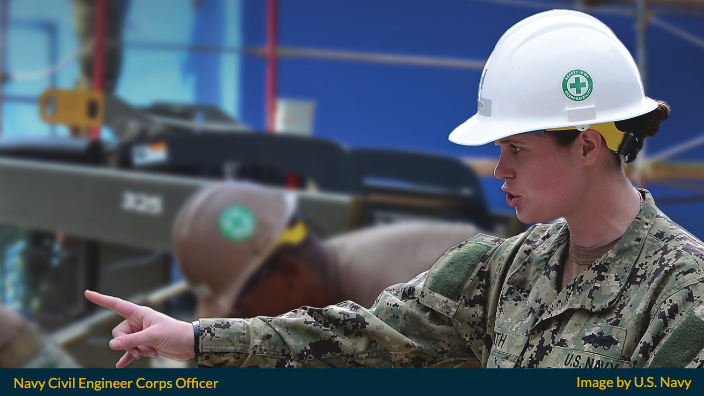
Navy Civil Engineer Corps (CEC) officers are Navy Staff Corps officers who are the Navy’s facilities specialists, responsible for the engineering, planning, administration, building, and upkeep of the Navy’s shore infrastructure.
Navy CEC officers supervise almost $12 billion in design, construction, and service contracts each year.
As a CEC officer, you will manage the efforts of a vast and diversified civilian and military workforce while operating and maintaining complex buildings and utility systems for shore activities.
From the start, you will keep an eye on construction, look for problems, and come up with solutions.
You will get engineering management skills, responsibility, and authority that far outweigh what the private sector has to offer.
There are hundreds of Navy and Marine Corps shore installations located across the world, each functioning as a tiny city.
CEC officers, despite being a small community of only 1,250 officers, can be found worldwide in prominent roles overseeing skilled personnel in various areas such as infrastructure repairs and maintenance, construction projects, facility support contracts, natural resource management, real estate management, environmental planning and management, and other facilities engineering domains.
From the outset, CEC officers gain extensive experience in engineering management and leadership that surpasses what is typically offered in the private sector.
There are hospitals, airfields, power plants, housing, retail, and office buildings, among other things, that need the technical and contractual skills of the Navy CEC officer.
As a CEC officer, you will:
- Perform a variety of different functions. You will, however, focus a lot of your time on facility building and administration, as well as engineering for expeditions.
- Serve your nation by utilizing your engineering and architectural abilities as well as the significant responsibility that comes with being a commissioned Staff Corps officer in command.
This is your chance to help out, learn important leadership lessons, and learn skills that cannot be learned only through school.
The Civil Engineer Corps requires officers to get Professional Engineer or Registered Architect licenses and helps them to get it.
As a Civil Engineer Corps officer, you may be able to use your work experience to get your license.
The CEC community is managed by the Navy Facilities Engineering Command (NAVFAC).
What does a Navy Civil Engineer Corps Officer do?
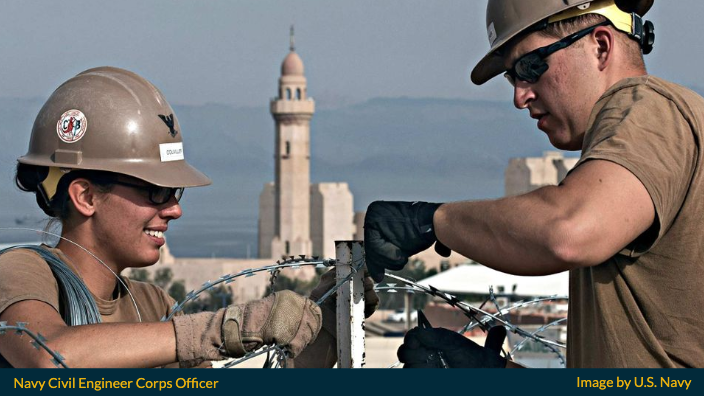
Each year, significant expenditures are made on infrastructure to support the Navy’s advanced fleet of ships, planes, equipment, and personnel.
A competent crew of civil engineers is at the heart of these projects, ensuring that each effort is developed, planned, and delivered on time, under budget, and according to specification.
As a Navy CEC officer, you will get to work on some of the most advanced military projects that have ever been done.
You may be sent to work at Navy bases or ports of call worldwide.
You may be assigned to assist in the development or reconstruction of regions devastated by natural catastrophes.
Your daily work environment may be inside, outdoors, at a shop, or in an office.
Core Duties
Navy CEC officers spend more than 75% of their time designing, building, and managing complex structures and utility systems at Navy, Marine Corps, and even Air Force bases all over the world.
They approve and carry out the designs of skilled architects and engineers, as well as identify, evaluate, plan, budget, schedule, and carry out necessary maintenance and repairs.
Facility engineers require a lot of problem-solving skills, as well as leadership and technical skills.
Expeditionary Duties
For roughly 25% of their tenure, CEC officers will provide expeditionary and shore facility engineering assistance throughout the whole range of Naval Expeditionary operations.
The primary purpose is to command the committed “Can-Do” Seabees of the Naval Mobile Construction Battalions and Amphibious Construction Battalions (NMCBs and ACBs), which support the Navy/Marine Corps team’s amphibious operations.
The Seabees have a proud history of constructing roads, airstrips, bridges, shore facilities, utility systems, and other structures—often in remote and difficult locations.
As a Civil Engineer Corps architect or engineer, you may work on peacetime or contingency building and engineering, disaster response, humanitarian construction, or stabilization activities at home and abroad.
Navy CEC Officer Responsibilities
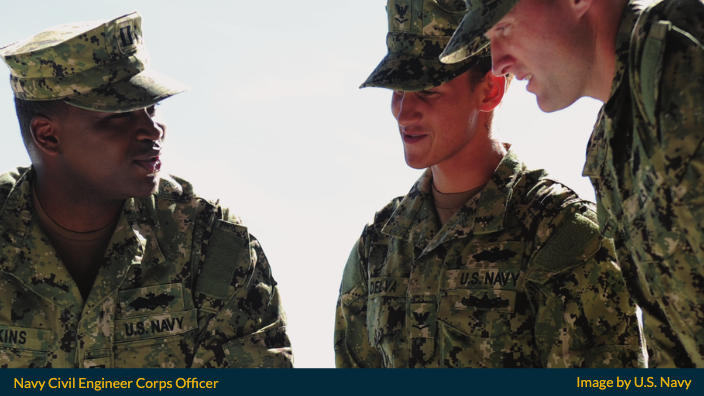
As a member of the Navy Civil Engineer Corps, you will gain unparalleled hands-on experience and advanced training in areas such as construction engineering, architecture, environmental engineering, geotechnical engineering, structural engineering, water resources engineering, hydraulic engineering, transportation engineering, land surveying, and community planning.
You will quickly be in charge of important Navy projects, where you will have to do the following:
- You will supervise the construction of a variety of structures, ranging from runways to ports to diverse structures.
- Supervise and manage utilities and other mission-critical services.
- Supervise a diverse group of qualified construction employees (Seabees).
- Budgets and timetables must be organized.
- Approve the completed work.
Focus Areas
Contract Management
As the Navy’s principal point of contact with civilian contractors, they manage contracts worth hundreds of millions of dollars.
The main task for Navy construction projects is to ensure they are built safely, as designed, on time, and within budget.
This involves ensuring that construction follows the project plans and specifications, resolving design problems, coordinating construction schedules with Navy operations, managing payments, and overseeing the project budget.
Construction managers may encounter a wide range of issues that affect safety, quality, and timely completion, including technical, contractual, and business concerns.
This job is in the Facilities Engineering and Acquisition Division (FEAD) of Naval Facilities Engineering Command (NAVFAC), and about 30% of new CEC officers work as construction managers, who oversee every part of a project, from overseeing construction to resolving design issues to making sure payments are made correctly.
Facilities Management/ Public Works
CEC officers manage and maintain facilities and utility systems at shore activities. They oversee a diverse workforce of civilian and military personnel.
Their responsibilities include power distribution, HVAC, water and wastewater, grounds maintenance, telecommunications, transportation, environmental issues, and facilities maintenance.
CEC officers face similar challenges to facility managers in other sectors. Public works is important for every member of the Navy and Marine Corps team, including aviators, submariners, ship-drivers, SEALS, Marines, and civilian government employees.
They are located worldwide and have various roles, suchas project planning and execution, and coordination of public works concerns with operating forces. Approximately 40% of junior officers serve in these positions.
Take leadership of one of the Navy’s hundreds of shore installations, some of which are the size of whole cities, and the maintenance of utilities.
Supervise and repair construction, manage finances, approve public works plans, and give services to visiting ships.
Construction Battalions/ Expeditionary Engineering
Command up to 600 enlisted Seabee construction personnel in the construction of airfields, bridges, ports, or structures—all in support of humanitarian assistance and military deployment.
Seabees is the common colloquial term used to describe the U.S. Naval Construction Battalion.
An expeditionary job is unique to the Navy, unlike public works and construction management. Approximately 30% of CEC junior officer jobs are expeditionary, providing opportunities to gain unique skills and experiences.
Most of these jobs are with the Seabees, a force of highly skilled enlisted personnel trained in construction and defensive combat.
CEC officers lead the Seabees, who are deployed worldwide for contingency construction, humanitarian assistance, and disaster relief.
The Seabees’ motto, “We Build, We Fight,” summarizes their role. Seabees can be found in NMCBs, ACBs, or UCTs, each offering different construction capabilities and leadership challenges for CEC officers.
New CEC officers are expected to lead Seabees in accomplishing various missions. Developing leadership skills is crucial for CEC officers, and the Seabees provide valuable lessons and experience in this area.
How to Become a Navy Civil Engineer Corps Officer
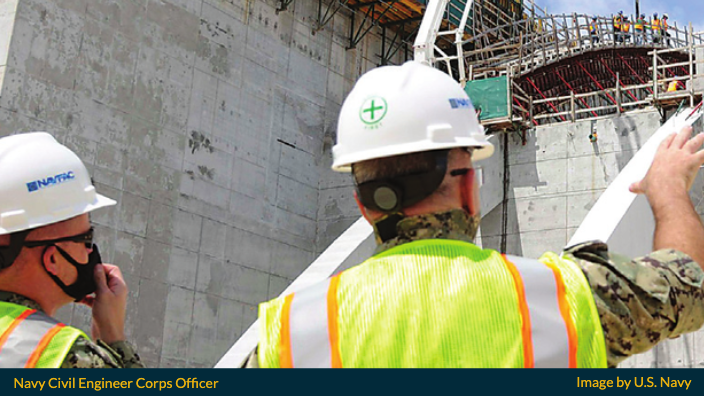
If you are interested in becoming a Navy Civil Engineer Corps officer, you should first understand that obtaining a commission in the United States Navy, particularly in the Navy CEC program, is extremely tough.
Notably, this is not the same as applying for a civilian civil engineering career, as Navy CECs have a direct impact on national security.
People who are in the military must do better and behave better than people who are not in the military.
If none of this has deflated you, you may have the required sense of pride and integrity for this profession.
To become a Navy CEC officer, you must be an American citizen, no older than 36 years old, with an engineering or architecture degree from an accredited institution and a score of at least 45 on the Officer Aptitude Rating (OAR) exam.
The basic requirements contained herein are current as of October 2022, per the Navy Personnel Command. No updates have been issued thus far.
Those who are still in college will apply through the Navy Civil Engineer Corps Collegiate Program.
The following are the step-by-step procedures for becoming a Navy CEC officer, as well as the different requirements for Navy Civil Engineer Corps officers:
Step 1: Determine your eligibility
To begin with, you must determine your eligibility for a Navy CEC post.
The following are the basic eligibility requirements for the Navy CEC officer program.
a) Citizenship
All Navy CEC officer applicants must be US citizens.
b) Age
At the time of commissioning, applicants must be at least 19 years old but not yet 36 years old. This may be waived if the individual is under the age of 42 at the time of commissioning.
Prior service applicants with very extraordinary credentials and verified, sustained excellent performance in an expeditionary force unit are excluded from the waiver criteria if they can be commissioned before their 42nd birthday.
c) Education
Obtain a bachelor’s or master’s degree in:
- Engineering program that is currently accredited by ABET-EAC.
- Architecture program that is currently accredited by NAAB (bachelor of architecture or master of architecture degree program.
Candidates who have an ABET-EAC or NAAB-accredited bachelor’s degree and are pursuing an unaccredited master’s degree will be able to apply right away.
They may be able to ship to Navy OCS before they finish their degree.
All students who are less than three months removed from graduation are considered direct accession candidates.
Without a waiver, the following degrees are not accepted:
- Any engineering degree that is not accredited by ABET or the EAC are ineligible unless the applicant fulfills one of the following criteria:
- Already officially registered as an engineer-in-training with a state license
- Already holds a professional engineer license
- Any architectural degree that is not NAAB certified will be disregarded unless the applicant satisfies one of the following criteria:
- Already a certified architect with the state
- Pursuing a master’s degree in an NAAB-accredited program after earning a bachelor’s degree
- Applicants must have a cumulative GPA of at least 2.7 (on a 4.0 scale)
- All applicants must have a cumulative GPA of at least 2.7 on a 4.0 scale.
- Collegiate officer candidates’ academic transcripts will be reviewed twice a year, and if they fail to maintain a cumulative 2.7 GPA (on a 4.0 scale) or receive less than a 2.0 on a 4.0 scale in any STEM course, they may be removed from the program and separated from the Navy by the Commander, Naval Recruiting Command (CNRC).
- Collegiate officer candidates must remain enrolled as full-time students (including summer session as needed to complete degree-required courses) and will not be permitted to increase their projected time in college, discontinue classes, change majors, enter an exchange program, or transfer schools unless specifically authorized by CNRC and the CEC OCM. Failure to get permission may result in enrollment termination.
- Applicants who are not selected by the current selection board may not reapply to the selection board immediately after being rejected unless significant improvements are made to increase their competitiveness. Prior to resubmitting an applicant’s package for reconsideration, CNRC must notify the CEC OCM and describe what major changes were made to the package.
d) Physical attributes
In accordance with Chapter 15, Manual of the Medical Department, as long as the applicant is still eligible for worldwide assignment, sea duty, and expeditionary missions.
This requirement can be waived on a case-by-case basis.
e) Aptitude
A minimum Officer Aptitude Rating (OAR) score of 45 is required to apply for the Navy CEC officer program. This may be waived down to a lower score of 40.
The most crucial requirement that you can fully control is your OAR score. It is the primary objective criteria upon which all applicants are compared against.
To maximize your chances of obtaining an exceptional OAR score, we only recommend this OAR Study Guide for your success. All others are mediocre at best.
Armed Forces Qualification Test (AFQT). Candidates for collegiate programs must score at least 35 on the AFQT. The AFQT scores must be provided in the candidate’s professional recommendation package.
Step 2: Prepare your professional resume
If you have not yet updated your resume or curriculum vitae, now is the time to do so.
The application process starts with the review of your current resume or curriculum vitae, so please have this ready.
So when you contact a local recruiter, which is the next step, they will want a copy of your most recent resume.
Your local officer recruiter may even want a hand-signed and dated resume.
Step 3: Contact your local officer recruiter
You must then contact the officer recruiter in your area.
They will be able to tell you about the Navy CEC officer positions that are still available and any other details about the Navy CEC selection board that is coming up soon.
The recruiter will need your birth certificate, passport, social security card, and current resume to show that you are who you are and that you are qualified for the job.
Step 4: Take the Officer Aptitude Rating (OAR)
After the officer recruiter confirms that you meet the basic requirements for the CEC officer program, they will schedule you to take the Officer Aptitude Rating (OAR) exam.
You must pass this exam in order to be a CEC officer, which is one of a few Staff Corps officer positions that require the OAR.
Again:
A minimum OAR score of 45 is required to apply for the Navy CEC officer program. This may be waived down to a lower score of 40.
Step 5: Complete Navy NASIS
A National Agency Check, a Local Check, or its equivalent must be conducted prior to commissioning.
NASIS collects information from potential naval officers in order to conduct personal security investigations on all Navy personnel.
The information is submitted to the Joint Personnel Adjudication System to initiate an investigation into a security clearance investigation (JPAS).
NASIS is the Navy’s security clearance data gathering tool, and it connects with JPAS.
All prospective Navy officers must submit an SF-86 request for security clearance and have an open investigation prior to commissioning.
Your recruiter will assist you with logging onto your NASIS account. This must be completed as accurately and timely as possible.
Step 6: Complete Physical Exam at MEPS
After you have submitted all the required medical documentation to your officer recruiter, they will schedule you for a thorough physical examination at MEPS.
MEPS (Military Entrance Processing Stations) are Department of Defense-run joint-service facilities that employ military and civilian workers.
Moreover, MEPS looks at applicants based on their physical traits, intellect, and moral standards as set by each branch of the military.
Hotel accommodation may be available for MEPS upon request.
Step 7: Interview with the CEC Accession officer
Candidates have to pass an interview with a CEC accessions officer or another senior CEC official chosen by the CEC Officer Community Manager in order to join.
Step 8: Obtain professional endorsement
Candidates must provide a minimum of one letter of recommendation.
Letters of recommendation are very important for candidates, so they should send at least three, but not more than five.
Step 9: Write a motivational statement
The officer Selection Board obtains comprehensive information about you through the Application Processing and Summary Record (APSR), so this is one of the most critical documents in your application.
There is room on the APSR form for a motivating remark. You must make sure that your motivational statement fits inside the space on the APSR form.
The following questions should be addressed in your motivating statement:
- Why are you interested in becoming a Navy CEC Officer?
- Why are you interested in becoming a Navy Officer?
- What services do you provide to the Navy?
- Why should you be selected by the selection board?
Step 10: Complete application paperwork
Your officer recruiter will next supply you with many pieces of paper that must be submitted with your application.
Complete these forms as completely and properly as possible.
As soon as you finish your application for the Navy CEC officer program, it will be sent to the Navy Civil Engineer Corps officer selection board.
It usually takes 30 to 45 days for the results of the Navy Civil Engineer Corps officer selection board to be made public after the board meets.
Who May Apply
- All qualified civilians.
- Former members of the U.S. Service Academy (all branches) and Reserve Officer Training Corps (ROTC) who have received pay entitlements, subsistence allowances, tuition, or fees under the terms of the scholarship or college programs are eligible, but they cannot be called up for active duty until after they have completed their college education.
- Navy enlisted Sailors.
- Enlisted members from other military branches.
Navy CEC Officer Service Obligation
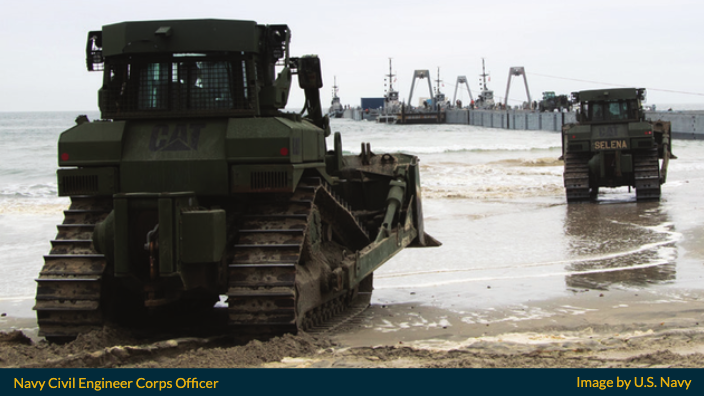
All officers are required to serve an eight-year commitment, which can be fulfilled by a combination of active and reserve service. Officers must serve at least four years on active duty after being commissioned. The remaining service, up to eight years total obligatory duty, may be served in reserve status.
Collegiate officer candidates who disenroll from the CEC collegiate program, fail to complete all program requirements, or are no longer eligible for a commission as a naval officer (whether for reasons of academic performance, professional behavior, character, or physical qualification) will be removed from the program and separated from the Navy by CNRC with the approval of the CEC OCM.
Initial Enlistment
Direct Accession
During OCS, civilians will be assigned to active duty as officer candidates (E-5).
Enlisted personnel in pay grades E-4 or lower are designated officer candidates and promoted to pay grade E-5 upon reporting to OCS. Enlisted personnel in pay grades E-5 and upwards are designated officer candidates in their present pay grades.
Honorably separated selectees with prior commissioned service may be brought back in as a straight admission.
Collegiates
Placed on active duty as an officer candidate (E-3) or, if currently enlisted, ordered to the Navy Recruiting District/Navy Talent Acquisition Group closest to their college and/or location for administrative purposes while they finish college and await OCS. Collegiates will be promoted to E-5 on merit after graduation.
Any collegiate officer candidate who refers a lead that results in admission to any similar Navy collegiate officer program will be advanced one pay grade (i.e., E-3 to E-4) up to a maximum pay grade of E-5, and will be entitled to advance one pay grade, up to a maximum pay grade of E-5, for each year they are in the program.
Civil Engineer Corps Officer Training
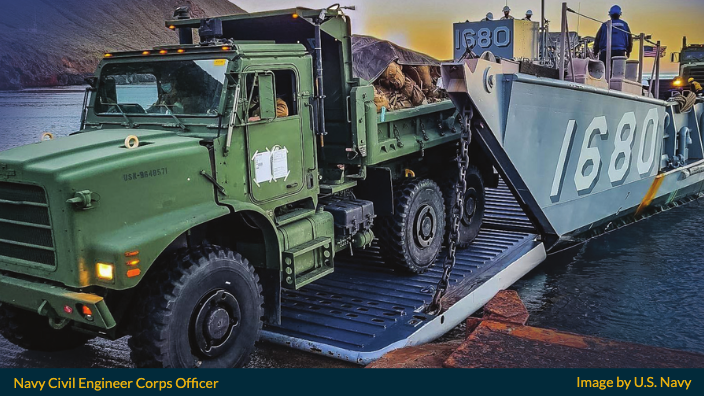
Individuals interested in pursuing a career in civil engineering must first attend Officer Candidate School (OCS) in Newport, Rhode Island.
Following that, officers will attend Civil Engineer Corps Officer School where they will obtain specialized military training in areas like management, administration, contract management, public works, and specific military positions such as construction battalions.
Officer Candidate School
Officer Candidate School (OCS) in Newport, RI, is the first stop for CEC candidates.
Navy OCS is a three-month curriculum that gives a thorough and intensive introduction to the responsibilities of Navy Officers.
There, officer candidates study the Navy’s military system, its rich culture and customs, leadership development, and military etiquette here.
After completing OCS, applicants will receive a commission in the Navy and be assigned to the CEC as Ensigns.
Also Read: Navy OCS Guide for Officer Applicants
Civil Engineer Corps Officer School
The Basic Course is required for new CEC officers and is held at the Civil Engineer Corps Officers School (CECOS) in Port Hueneme, California.
The Basic Course lasts 16 weeks and includes orientation to the CEC, federal contracts, and Seabee missions.
The course offers a non-technical (no mathematics or physics required) introduction to the diverse responsibilities performed by CEC officers, as well as some specialized additional training specific to your initial assignment.
However, the most effective approach to acquiring the essential skills and proficiency is through ”on-the-job” training, which is widely considered the most critical component of any CEC officer’s training.
Defense Acquisition University
CEC officers must get business education through the Defense Acquisition University in the form of contracting certifications.
Certification is available at three levels, and the first class toward earning a Level 1 certificate will be held at CECOS.
The remaining resident and online courses will be taken during the course of your career, depending on class availability and workload.
Postgraduate Scholarship
The Navy completely funds graduate school for all career-minded CEC officers.
This implies that tuition is covered, and the officer obtains his or her full salary in order to attend school full time without having to do any additional duties.
Typically, officers are selected for graduate school after serving at least 6 years in the Navy, but before reaching 10 years of service. This is partly to promote lifelong learning.
Each officer is free to choose which school to attend and what kind of degree to get, subject to Navy permission. Graduate school imposes an additional service obligation (usually roughly 3 years).
More Information
If you want more information about becoming a Navy Civil Engineer Corps officer, the next logical step is to contact a Naval Officer Recruiter.
Let us start figuring out how you can benefit from becoming a Navy CEC officer – or if it is even the right move for you, considering your current life situation.
You may also be interested to read these:
Hope this was helpful as you plan your career.
